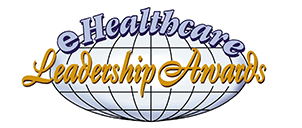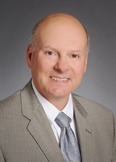And the Winner Is…
Veteran Judges Discuss eHealthcare Leadership Award Program Recognizing Digital Initiatives
// By Jane Weber Brubaker //

When it comes to awards, landing on the podium is a cause for celebration. The annual eHealthcare Leadership Awards are the “Oscars” of healthcare digital marketing. Healthcare organizations of all sizes have the opportunity to shine the spotlight on their digital success stories, and see how they stack up against the competition.
Back Together Again
The eHealthcare Leadership Awards were recently acquired by Plain-English Media, parent company of eHealthcare Strategy & Trends. “It made sense to reunite the two,” says Matt Humphrey, founder and president of Plain-English Media. “Both the awards and the publication showcase leading healthcare organizations and how they are successfully leveraging digital channels to drive strategic goals.”
What Makes a Winner?
The awards are judged by experienced digital marketers from hospitals and health systems, as well as marketing service providers. In 2016, it took 116 judges to evaluate the entries. What do they look for? What does it take to earn a platinum, gold, silver, or bronze award? What is the judging experience like? We interviewed three veteran judges from health systems to learn more about the process: Neal Linkon, director of digital engagement at Children’s Hospital of Wisconsin; Scott Mowery, director of digital marketing at Cleveland Clinic; and John Odom, senior coordinator and webmaster at St. Louis Children’s Hospital.
The Judging Process
Judges evaluate one or multiple categories in a given year, and the size and type of organization may vary [see sidebar]. They receive a spreadsheet for each category, such as “Best Site Design,” with a URL for each entry. Linkon appreciates the objectivity of the judging process. “The criteria are pretty specific,” he says. “There’s not a ton of room for variability between one judge’s preferences and another.”
The entries are ranked on each criterion included in the category on a scale from one to five, with five being the highest score. Once all the entries have been scored, the judges rank their top three picks for the category, and may include additional comments. The judges do not decide which level the entry deserves, as they may not see all the entries for a category.
Judges take their jobs seriously. “It takes a decent amount of time,” says Mowery. “You have to spend time digging through the sites and really looking at a variety of pages, trying out functionality and things like that.” Judging takes place in August and September.
What Gets the Judges’ Attention

John Odom, senior coordinator and webmaster at St. Louis Children’s Hospital
The eHealthcare Leadership Awards focus on digital functionality, with an emphasis on ease of use. “Patient-centric focus is one of the overarching things that has driven a lot of the changes in the industry,” says Odom. “The things that stand out to me are those innovations that make it easier for the site user to acquire certain types of information.” The doctor directory, he notes, may simplify things based on known patient priorities, such as insurance information; or the directory could include comprehensive information with filters to drill down. “There are many different ways you can look at it,” says Odom. “It shows how granular you have to be, not guessing about what’s going to work, but looking at it based on evidence.”

Scott Mowery, director of digital marketing at Cleveland Clinic
Mowery recalls one site that used video in a unique and effective way. “They incorporated video content to address a wide variety of questions related to the various stages of the pregnancy in a way that I thought was really useful,” he says. “We use a lot of video content on our site, but the way they were approaching it was a little different than some of the things we’ve done in the past.”
He notes that the way different sites use calls to action makes them stand out. “We’ve taken some of those approaches on our site to make calls to action a lot more visible and prominent on page, regardless of whether you’re looking at a desktop or mobile experience,” he says.

Neal Linkon, director of digital engagement at Children’s Hospital of Wisconsin
Effective integration of content within the site is another element that gets the judges’ attention. Linkon has judged the “Best Healthcare Content” category for several years. In this category, he comments, it can be a challenge to differentiate between sites that use the same licensed content. “When I’m looking in the healthcare section of a hospital’s website and the cardiac section includes links to the licensed content, and the licensed content prominently offers me options to find doctors who can help me, or locations who can help me, that’s where I think it really starts adding value to the site visitor and to the enterprise,” he says. “I don’t see a lot of organizations doing that really, really well.”
A judge’s experience on a website mirrors a user’s experience, and when key information is difficult to find, the score goes down. “It shouldn’t be confusing or tricky for me to find something that I’m trying to identify,” says Linkon. Judges also observe that design can sometimes interfere with the user experience. “A beautiful, elaborate website sometimes gets in the way of its usability,” says Linkon. “On some sites the homepage graphic is so massive, even on a desktop screen, it shoves all of the critical content that I might need to get to down below the fold.”
Evolution of Digital Reflected in Awards Entries
Entries have evolved over time to keep pace with digital marketing, which continues to grow in sophistication. Mobile devices are ubiquitous, raising the bar for marketers. In the future, judges believe it won’t be enough to have a mobile-friendly site. “A site may look okay on a mobile phone, but how much are you taking advantage of the phone’s functionality?” asks Mowery. “Things like that I think are going to start coming into play more in the judging going forward that maybe in past years haven’t been as big of a deal,” Mowery says.
He sees similar progression in the use of social media. “I think that will continue to evolve,” says Mowery. “It’s not as simple as saying, ‘I’m on Facebook, Twitter, YouTube, or Snapchat.’ What are you doing with those? Just being on Facebook isn’t enough to win an award. You need to be able to show what you’re doing with it.”
What Judges Get Out of It
The judges value the opportunity to look over the shoulders of their peers, and give back to the industry. “I look at it as an opportunity to learn. What are they doing differently or better?” says Linkon. Odom concurs. “It’s really interesting to me because I can take some of what I see my colleagues doing and try to apply it to what we are trying to accomplish on our site.” Mowery adds, “It’s an honor be able to judge the kind of work some of these organizations have in place on their websites. I feel like I can give back by judging, but I also feel like I learn a lot as well.”
The awards reflect the state of the industry, and give both entrants and evaluators the opportunity to reach higher. “Each year the work gets better and better, so the sites that you see are the true leaders in our industry,” says Mowery. “And I think that’ll continue in years to come.”
eHealthcare Leadershp Awards Categories and Group Classifications
Categories (15)
Best Special Event Site
Best Annual or Special Report
Best Overall Internet
Best Site Design
Best Social Networking
Best Rich Media
Best Interactive
Best Healthcare Content
Best Mobile Communications
Best Patient Access and Convenience
Best Care/Disease Management
Best Doctor Directory
Best Marketing Campaign
Best Intranet
eHealth Organizational Commitment
Group Classifications (17)
Hospital Size
- Under 200 beds
- 200-399 beds
- 400+ beds
Healthcare System
Hospital Subsite/Center of Excellence
Medical Practice/Clinic/Outpatient Facility
Other Healthcare Facilities
Healthcare Association/Professional Society
HMO/PPO/Other Insurers
Consumer General Health Site
Consumer Disease-Focused Site
Physician/Clinician-Focused Site
Pharmaceutical or Medical Equipment Manufacturer
Fundraising Site
Business/Process Improvement Applications or Products
Agency/Corporate Vendor Site
Other Healthcare Sites
Jane Weber Brubaker is editor of eHealthcare Strategy & Trends.

